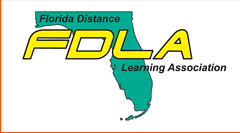Abstract
Provision of services for minority and underserved populations is often problematic. Often, these students attend schools in districts in which funding is lacking for the delivery of services (Ballantine, 2017; Brint, 2017). Classic texts such as Kozol’s Savage Inequalities (1991) highlighted the disparate nature of the schools that serve these populations, and concomitantly the diminished opportunity for these students in terms of academic progress and workforce possibilities. This disparity of opportunity, often characterized by ethnicity and socioeconomics, persists into the 21st century (Rothstein, 2014; Weir, 2016).[1]
[1] Kozol also continues to describe the ongoing disparity in American education in the 21st century (e.g., Kozol, 2005).
Recommended Citation
Holt, Jerry
(2018)
"University Partnership: A Grant-Funded Program for Minority and Underserved Populations,"
FDLA Journal: Vol. 3, Article 1.
Available at:
https://nsuworks.nova.edu/fdla-journal/vol3/iss1/1
Included in
Online and Distance Education Commons, Teacher Education and Professional Development Commons
